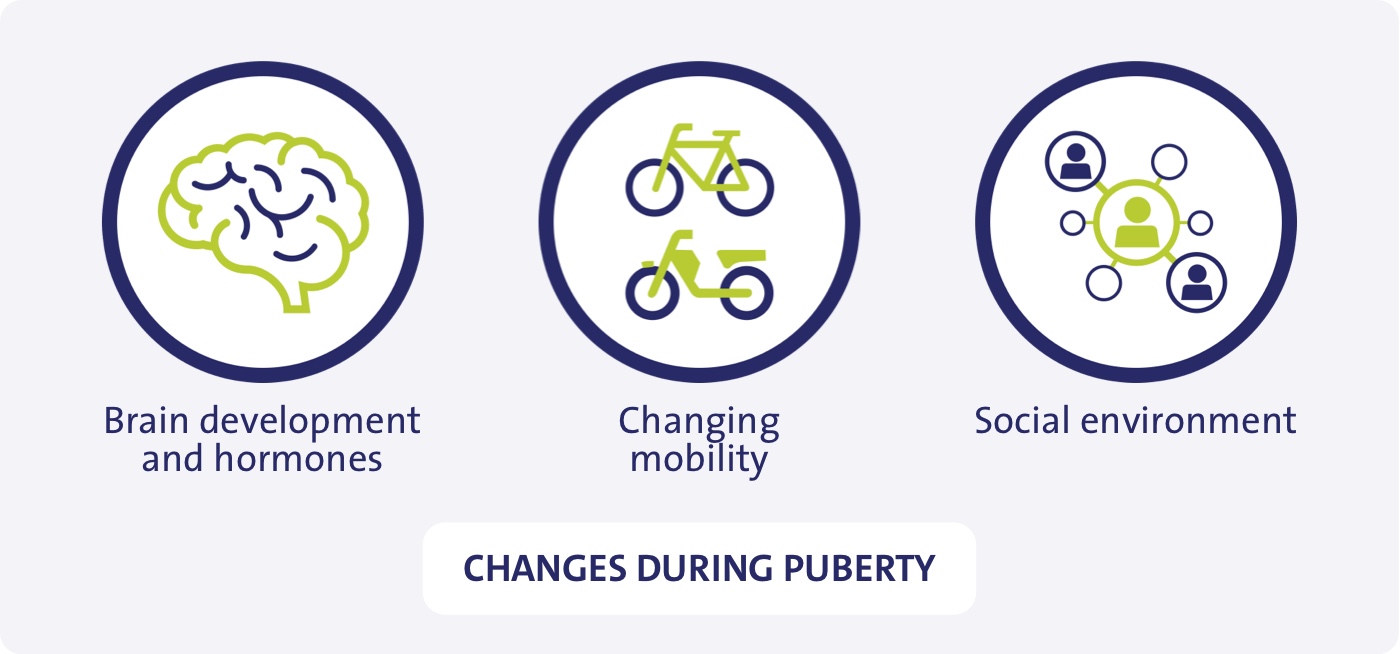
Brain development and hormones
Around the age of twelve, puberty starts, which changes the hormone system of youngsters. The ‘limbic system’, or the brain structures involved in emotions, pleasure and motivation, is already functioning as it does in adults. The prefrontal cortex, the ‘control system’ that ensures that we do not act in haste, are able to plan, and take our (social) environment into account, is not fully grown until the age of 25. An increase of risk behaviour in the early years of puberty could be the result of this asynchronous development [4]. Thus, youngsters are prone to go for fast rewards and enjoyment, while their sense of danger is less developed. As youngsters grow older, risk behaviour diminishes due to the growing maturity of the brain’s control system [5] [6] [7].
Apart from detrimental effects, puberty also has some positive effects. The structural biological changes that puberty brings and the substantial malleability of the brain entail a great learning ability. Acquiring new skills is easier for youngsters than for adults and youngsters are more dedicated when making an effort. In addition, a higher performance level for complex tasks is reached when these have been learned at a young age, compared to people who learned these tasks later in life [6].
Changing mobility
As youngsters grow older, their mobility changes. Social needs change as well; they do less with their parents and more with their peers, which implies they also become more independent road users. In addition, youngsters going to secondary school will travel longer distances, and will have access to new modes of transports, such as (light) mopeds [6].
Social environment
For youngsters, their social environment becomes increasingly important. They start to be less influenced by their parents and more by their peers; the latter becoming more important during adolescence [8]. In addition, youngsters that score high on sensation seeking in questionnaires, socialise with peers that have similar scores [9]. This creates a social environment in which risk taking is not only encouraged but also considered commendable. Because youngsters of the same age develop in the same way and experience an increase in sensation seeking, the attraction of joining each other in finding new thrills increases [9]. Youngsters take more risks when they are in the company of peers than when they are by themselves [7] [10].
